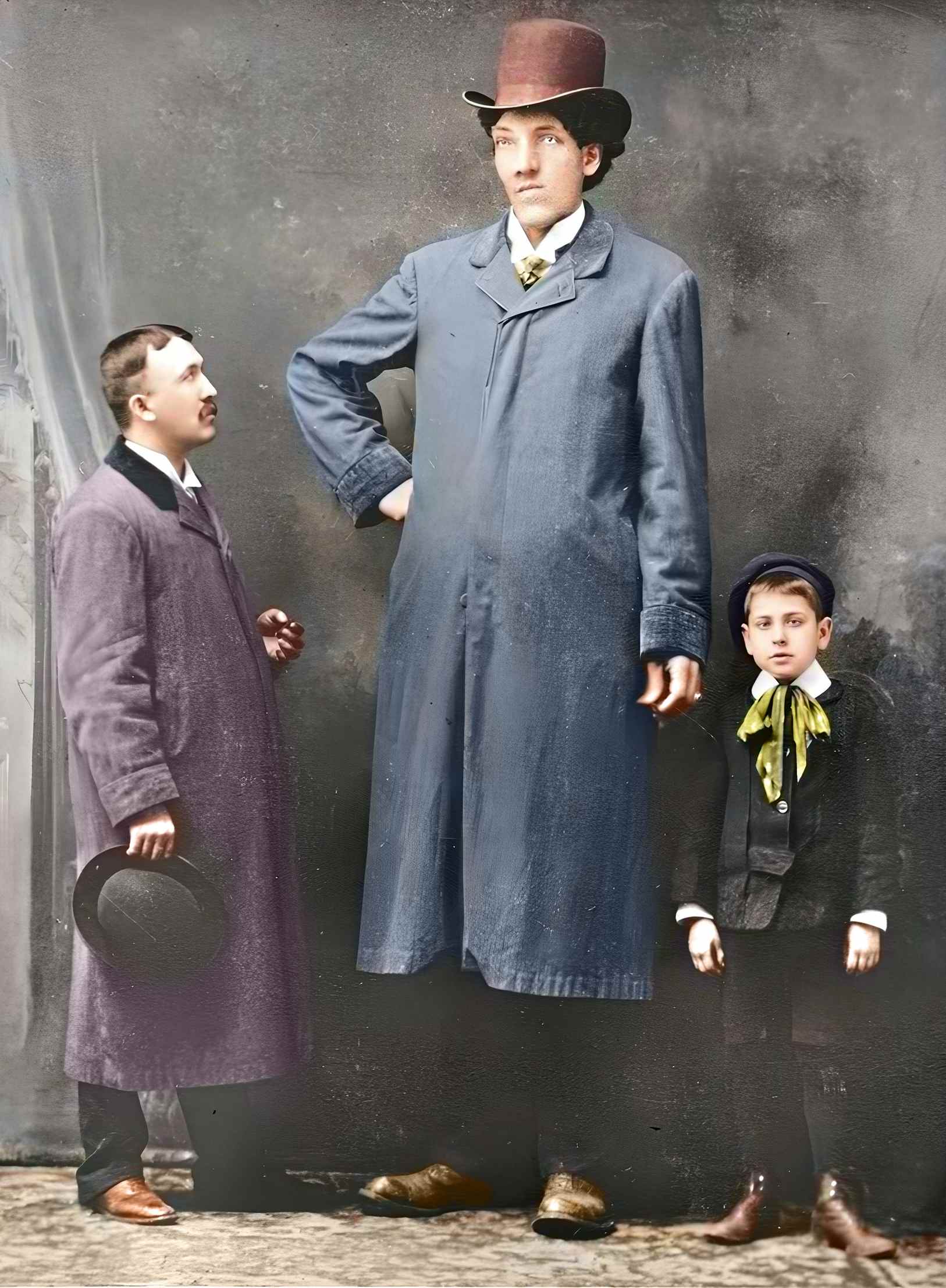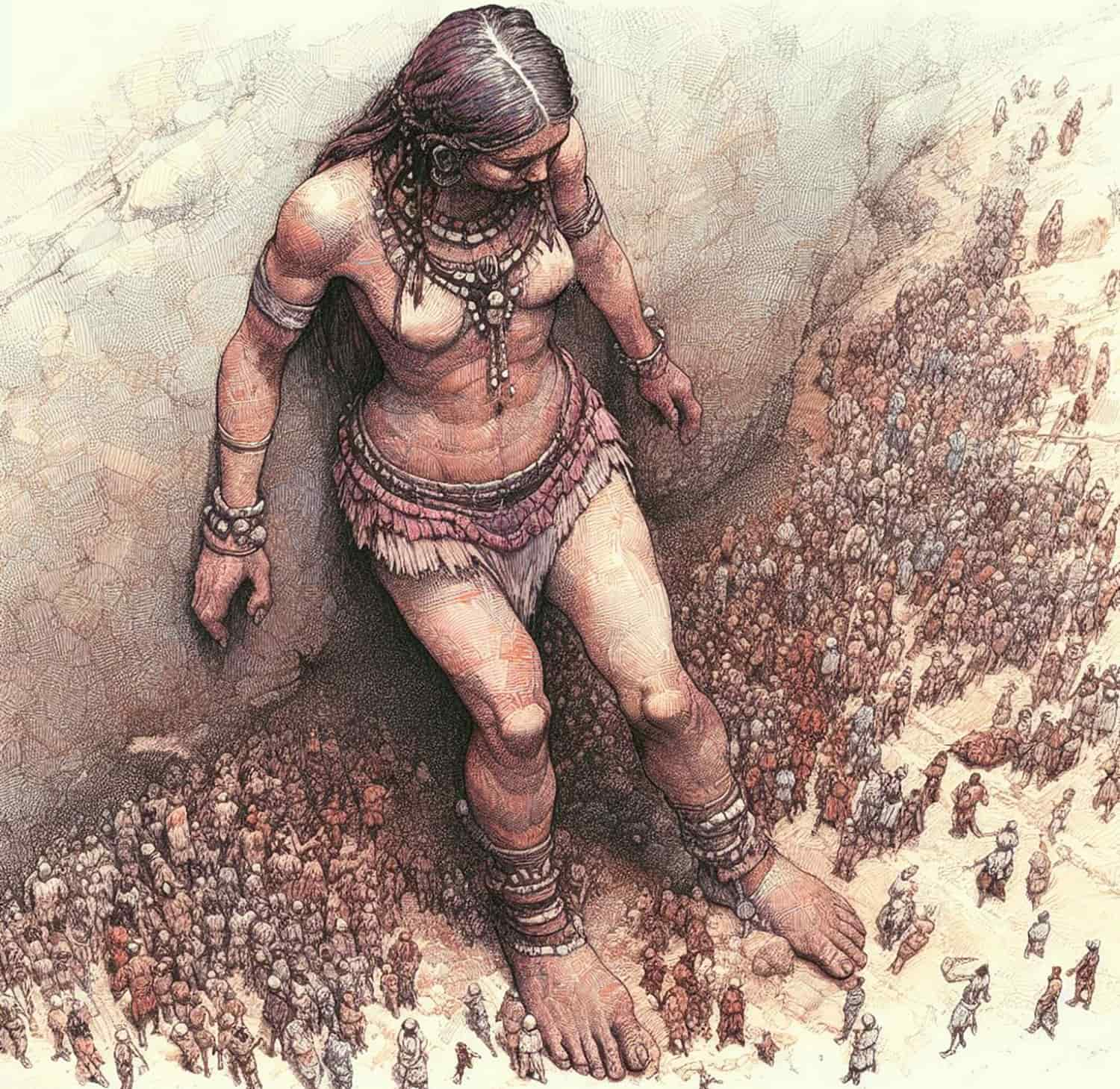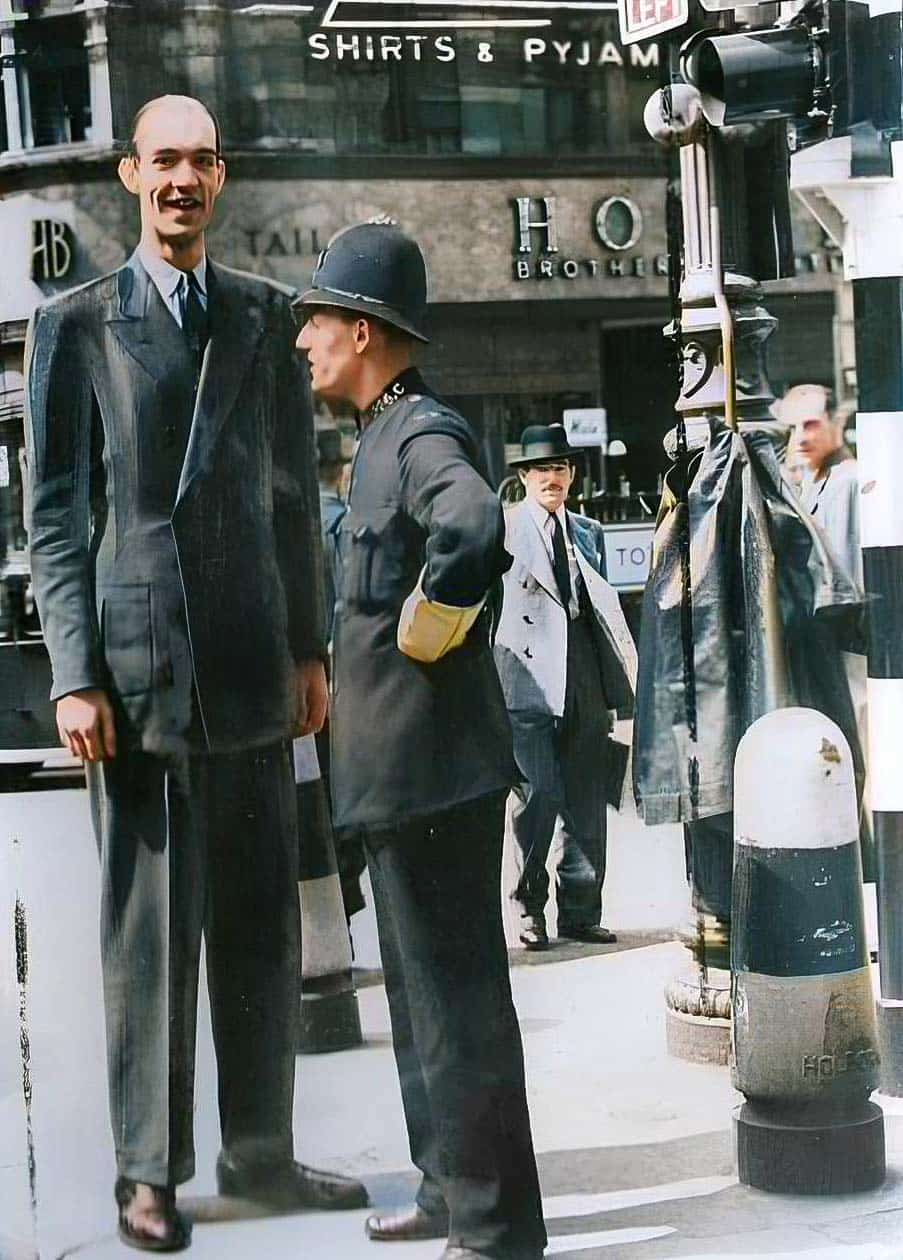Canadian Édouard Beaupré, who was 8 feet 3 inches tall (252 cm), was born on January 9, 1881, in Willow Bunch (previously Talle-de-Saules) in Saskatchewan and died on July 3, 1904, at the age of 23 in St. Louis, Missouri, in the United States. Edouard Beaupre was referred to as the Giant Beaupré. Just like other extremely tall people in history, like Robert Wadlow or Bao Xishun, he had a medical condition called gigantism.
Who Was Édouard Beaupré?
When thinking about historical people who towered over Canada, no one compares to Édouard Beaupré. This giant human was born with a pituitary tumor that oversecreted hormones from the anterior lobe of the gland, which normally regulates growth and development in a person.
Édouard Beaupré is known as the tallest athlete of all time.
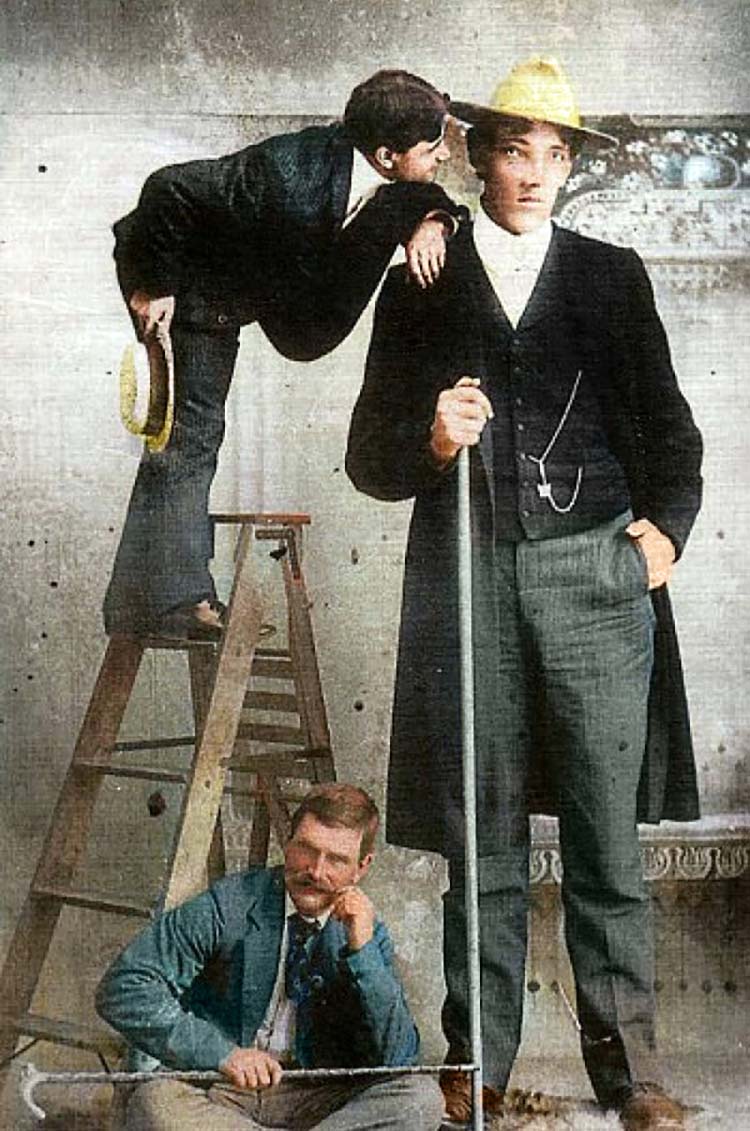
He was the oldest child among his 20 siblings. As a Métis, his parents traced their ancestry to the French settlers in the early decades of the colonization of Canada. When Édouard was born, he wasn’t very tall, but his growth started picking up speed when he turned 3 years old.
His Development
Édouard was an ordinary height when he first entered school at age seven, but by the time he was twelve, he had grown to more than 6 feet 6 inches tall. At this point, he decided to cease attending classes. Besides French and English, he also spoke Michif, Cree, and Sioux. Although he was a skilled horseman, by the time he was a teenager, he had grown to a height of 7 feet 3 inches and had given up the hobby.
When Beaupré was a child, he fell from his horse, and his face was somewhat disfigured for the rest of his life. Since he was too big to ride a horse and his feet were dragging on the ground on each side of the animal, Édouard had to give up his life goal of being a cowboy at some point.
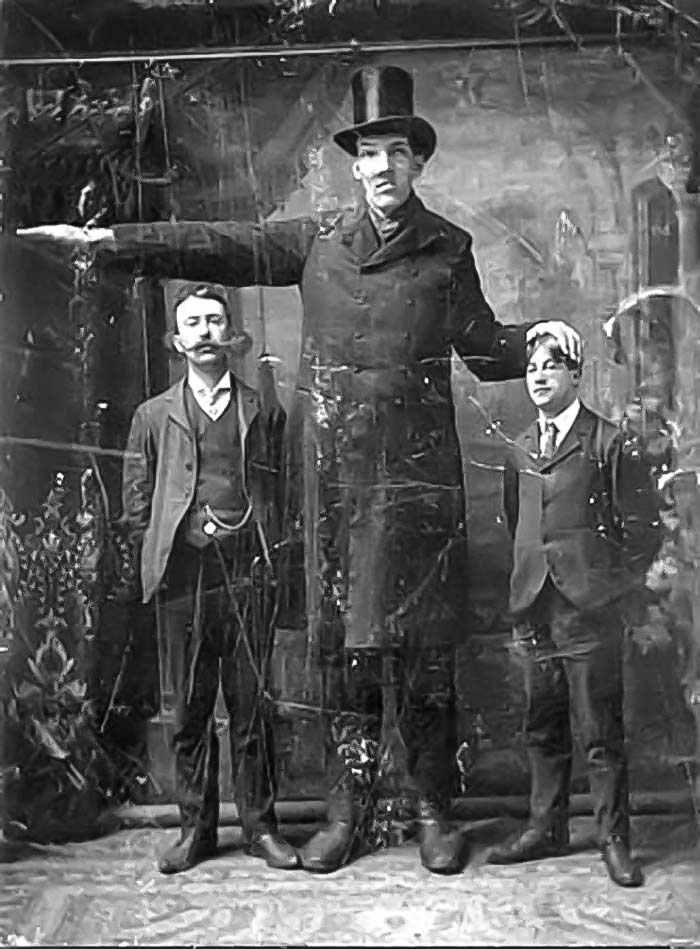
Beaupré left his ranch life behind and embarked on a traveling career. At 17, he joined Comédie en Vaudevilles, a theatrical entertainment, pretending to be a strong person while, in reality, he was not that sturdy for the role. He still lifted horses up on his shoulders and bent iron bars to prove his power.
His height and frame were out of proportion; at 17, he weighed around 350 pounds (160 kg) while being 7 feet, 1 inch tall. Four years later, he was 8 feet 2.4 inches and weighed about 400 pounds (180 kg). In his life, he worked as a freak in a circus. In 1902, he contracted tuberculosis, a disease that caused him to die two years later.
The Tallest Man vs. the Strongest Man
Édouard Beaupré was also a wrestler. After barely three minutes of fighting on March 25, 1901, he was hurt in a brawl against the world’s strongest man, the Canadian Louis Cyr. The lack of deference shown to Beaupré in the Canadian newspaper La Presse’s description of the wrestling was indicative of the general public’s treatment of him and was consistent with his personal experience.

Beaupré and Cyr, the largest man and the longest man in the nation, respectively, engaged in hand-to-hand wrestling during a night in Sohmer Park. According to the press, Cyr won the fight very easily, with the gentle giant not even daring to touch him. For many people, Beaupré was the most timid person they had ever seen. The extent of Cyr’s victory against the tallest man in the world surprised many of the spectators.
During the brawl, Cyr knocked his opponent down four times. However, two of these were off the mat according to the referee. Cyr had quickly figured out where to attack; he always caught the giant by his kidneys.
Nonetheless, the audience, numbering in the thousands, found the ugly struggle to be very entertaining. According to the press, the wrestling could have gone on for longer if Beaupré hadn’t been so cowardly. The whole night only lasted for a few minutes.
After the Brawl
After the fight, Louis Cyr claimed that he would always be sorry that he agreed to fight Édouard Beaupré. According to the man, if the wrestling had happened a few years earlier, before he became sick and lost his form, he probably would have “put an end” to the giant.
But when Édouard Beaupré was asked about his thoughts on the brawl, he answered in his own words, “It will be better tomorrow.”
Beaupré Had to Hide All the Time
Since Beaupré had to stay undercover between each stop the circus made in the next city, he essentially lived the life of a hermit. He had to be kept ‘secret’ so that the public would pay to see this gigantic human being and ‘circus creature’. When he was working in the circus, he often had to sleep on the floor.
He was around 21 years old, with a height and weight of 7 ft 11 in and 166 366 lb. His hands were 13.5 inches long from wrist to fingertips, and his neck was 21 inches around. His chest circumference was 56 inches, and his feet were a size 22 that required special footwear. He was 8 feet 2.5 inches tall in December of 1903.
Fortunately, a tailor’s desire for notoriety led them to make his garments for free, so he never had trouble getting dressed.
His Death
Édouard Beaupré was 23 years old when he died of tuberculosis in 1904, and he was a member of the famous Barnum & Bailey Circus at the time. In fact, this man had just inked a deal with the circus only two days ago to show up at the St. Louis World’s Fair in Missouri. At the time of his passing, he was measured at 8 feet, 2.8 inches (251 cm) and weighed 370 lb (170 kg).
Even after he died, people still didn’t treat this man with respect. Then, three years later, they accidentally found his preserved body in a hut in Montreal. A professor named Louis-Napoléon Delorme wanted to create a museum on the human body, but his museum ultimately failed.
He moved Beaupré’s body to the University of Montreal. There, it was shown to the public for almost 84 years, without any clothes, in a room where students studied bodies.
The university gave the family of Édouard his body for cremation in 1990. Following this, the urn containing his remains was buried in Willow Bunch, Saskatchewan province.
The Quebec folk-rock band Beau Dommage drew inspiration from Édouard Beaupré to create a song named Le Géant Beaupré for their self-titled 1974 debut album.
Disputes Over His Body
The circus requested that Beaupré’s body be embalmed, but they had no desire to cover the costs. The body was first displayed in St. Louis, then moved to the Museum of Eden in Montreal, but the exhibition was later canceled due to immense crowds that the museum staff couldn’t handle.
A Montreal circus acquired the body later, went bankrupt, and abandoned it in a storage facility. Children discovered it in 1907, and the University of Montreal later claimed it and mummified it. After a disagreement with the university, the corpse was cremated and returned to Willow Bunch for burial in 1990.


